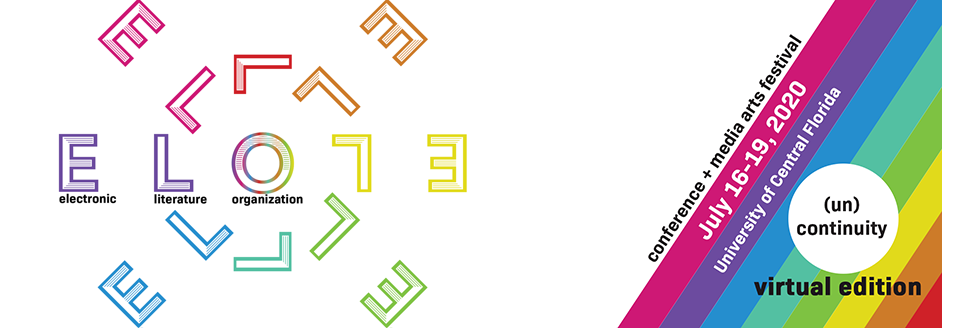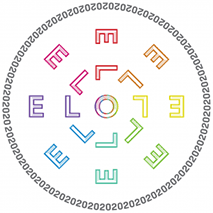Proposal Title
Loading...
Submission Type
Conference Talk - Individual
Abstract
Understanding grief is complex, even when you are in the middle of it. Unlike a lot of other media, electronic literature can provide a safe space to explore personal responses to grief thanks, in part, to its use of metalepsis.
According to Freud, “mourning is regularly the reaction to the loss of a loved person, or to the loss of some abstraction which has taken the place of one” (1917, p.242). John Bowlby’s attachment theory found that the way we grieve loss depends on how we form attachment (1988, p.24), and is often the result of early childhood experiences and trauma (1988, p.103). Like Bowlby, Worden developed 4 stages of mourning (1996). He also flagged the fact that grief isn’t linear, and that those mourning will often fluctuate between stages (Worden, 1996). Klass talks about continuing bonds, saying grief is never fully resolved (1993), while Stroebe and Schut say that a grieving person oscillates between loss and restoration; focusing on restoring activities when the loss becomes too overwhelming (2010).
The experience of intrusive thoughts is common in many of these theories, with those mourning struggling to remain in the present. According to Genette, metalepsis is also considered to be an intrusion, with the established narrative world being intruded upon by another narrative. The complicated, intrusive aspects of grief can therefore be represented in electronic literature using metaleptic techniques, allowing one narrative or diegetic universe to be intruded upon by another. This creates a work that explores both the experiences and theories surrounding grief.
References
Bowlby, John. A Secure Base: Clinical Applications of Attachment Theory. Routledge; London, 1988.
Freud, Sigmund. “Mourning and Melancholia”. The Standard Edition of the Complete Psychological Works of Sigmund Freud, Volume XIV (1914-1916): On the History of the Psycho-Analytic Movement, Papers on Metapsychology and Other Works, 1917, pp. 237-258.
Genette, Gérard. Narrative Discourse: An Essay in Method. Ithaca, Cornell UP, 1980, pp.
234-235.
Klass, Dennis. “Solace and immortality: Bereaved parents' continuing bond with their children.” Death Studies vol. 17, no.4, 1993, pp. 343-368
Stroebe, Margaret, and Henk Schut. “The Dual Process Model of Coping with Bereavement: A Decade On.” OMEGA - Journal of Death and Dying, vol. 61, no. 4, Dec. 2010, pp. 273–289,
Worden, J.William. “Tasks and mediators of mourning: A guideline for the mental health practitioner.” In Sess., 2, 1996, pp. 73-80.
Metalepsis and Mourning: Using electronic literature to explore our different responses to grief and loss
Understanding grief is complex, even when you are in the middle of it. Unlike a lot of other media, electronic literature can provide a safe space to explore personal responses to grief thanks, in part, to its use of metalepsis.
According to Freud, “mourning is regularly the reaction to the loss of a loved person, or to the loss of some abstraction which has taken the place of one” (1917, p.242). John Bowlby’s attachment theory found that the way we grieve loss depends on how we form attachment (1988, p.24), and is often the result of early childhood experiences and trauma (1988, p.103). Like Bowlby, Worden developed 4 stages of mourning (1996). He also flagged the fact that grief isn’t linear, and that those mourning will often fluctuate between stages (Worden, 1996). Klass talks about continuing bonds, saying grief is never fully resolved (1993), while Stroebe and Schut say that a grieving person oscillates between loss and restoration; focusing on restoring activities when the loss becomes too overwhelming (2010).
The experience of intrusive thoughts is common in many of these theories, with those mourning struggling to remain in the present. According to Genette, metalepsis is also considered to be an intrusion, with the established narrative world being intruded upon by another narrative. The complicated, intrusive aspects of grief can therefore be represented in electronic literature using metaleptic techniques, allowing one narrative or diegetic universe to be intruded upon by another. This creates a work that explores both the experiences and theories surrounding grief.
References
Bowlby, John. A Secure Base: Clinical Applications of Attachment Theory. Routledge; London, 1988.
Freud, Sigmund. “Mourning and Melancholia”. The Standard Edition of the Complete Psychological Works of Sigmund Freud, Volume XIV (1914-1916): On the History of the Psycho-Analytic Movement, Papers on Metapsychology and Other Works, 1917, pp. 237-258.
Genette, Gérard. Narrative Discourse: An Essay in Method. Ithaca, Cornell UP, 1980, pp.
234-235.
Klass, Dennis. “Solace and immortality: Bereaved parents' continuing bond with their children.” Death Studies vol. 17, no.4, 1993, pp. 343-368
Stroebe, Margaret, and Henk Schut. “The Dual Process Model of Coping with Bereavement: A Decade On.” OMEGA - Journal of Death and Dying, vol. 61, no. 4, Dec. 2010, pp. 273–289,
Worden, J.William. “Tasks and mediators of mourning: A guideline for the mental health practitioner.” In Sess., 2, 1996, pp. 73-80.




Bio
Dr. Karen Lowry is a digital graphic design lecturer at SAE Institute in Western Australia. She created the digital interface for Page & Powe by David Thomas Henry Wright, which was shortlisted for the Queensland Literary Awards. Her most recent work will be published by The Digital Review in May 2020. Learn more: www.kazzalow.com